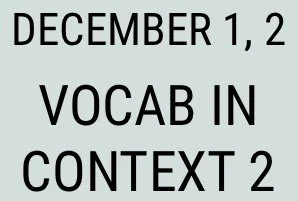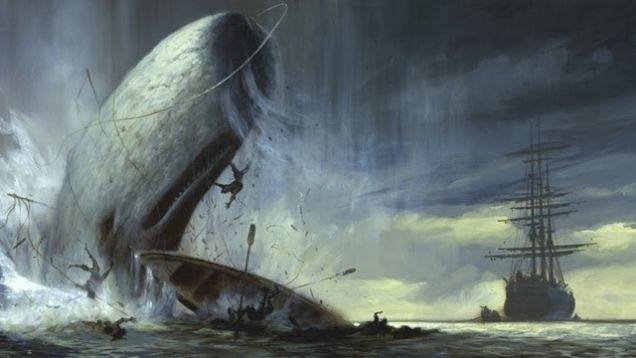unit 4: short fiction 1
Before our first meeting on James Baldwin’s “Sonny’s Blues,” please read from 122 to the gap on 133.
meeting 1: JAMES BALDWIN’S “SONNY’S BLUES”
The elements of fiction—plot, character, setting, detail, point of view, symbol, and theme—interact with one another in fiction, calling attention to other elements. Whereas during your freshman year, we studied these elements one by one, using one short story to show how one element of fiction functions, this year we will consider all of the elements simultaneously: It’s your job while reading to consider how the careful arrangement of events in a story, for instance, reshapes a character’s thinking and elevates a story on the thematic plane; it’s your job while reading to consider how the chosen perspective, for instance, creates bias and levels of reliability; and it’s your job to recognize patterns in detail, figurative language, imagery, and symbol, for instance, and think how they create meaning. So, we’ll start this unit by working through the various elements of fiction in a great 20th-C short story, “Sonny’s Blues.”
Let’s start with three questions:
What kind of a narrator do we have? To what extent is he biased and reliable? Is he likable? Why does that matter?
How does the plot expose details that complicate the story and reshape your thinking about the characters?
What patterns in imagery and figurative language do you notice, and what are we meant to do with them thematically?
HW: Finish reading “Sonny’s Blues.”
meeting 2: JAMES BALDWIN’S “SONNY’S BLUES”
Last time we compared Baldwin’s characterization to Dostoevsky’s: Both Dostoevsky and Baldwin characterize through carefully arranging the events of the story, but whereas Dostoevsky employs a third-person narrator who frequently shapes our understanding through free-indirect style, Baldwin’s first person narrator needs other narrative devices like a letter and dialogue to fashion the other characters in the story. We also saw that there will almost always be a certain amount of unreliability in a narrator, especially a first-person narrator.
Today, I’d like to look closely at the opening paragraphs to see how they set up the themes of the remainder of the story.
meeting 3: JAMES BALDWIN’S “SONNY’S BLUES”
Today we’ll wrap up our discussion of James Baldwin’s short story before introducing AP-style prose analysis; you’ll see that our approach to prose analysis does not differ all that much from our approach to poetry analysis. Near the end of class, we’ll practice our first prose MC set.
HW: In your short story anthology, you’ll find two stories thematically linked: James Joyce’s “Araby” and John Updike’s “A&P”. Thematically linked? By what, I wonder? Read both stories and make that determination for yourself.
meeting 4: Joyce’S “araby” and updike’s “a&P”
“Araby” and “A&P” link thematically how? Today we’ll work to theme through a comparison of both stories’ characterization strategies, use of setting and motifs, and narrative voices.
meeting 5: Joyce’S “araby” and updike’s “a&P”
Today, after we finish our discussion of the previous two short stories, we’ll turn to a series of prose passages to practice passage analysis and construction of multiple choice questions.
HW: In an effort to prepare for the full MC test on Monday/Tuesday, work through the final passage from Jane Austen’s novel Emma, marking it up as you go and creating one MC question.
MEETING 6: FULL MC TEST
MEETING 7: FULL MC TEST and REVIEW
HW: Please slowly, lovingly read Hemingway’s “A Clean, Well-Lighted Place” in the short story anthology, pages 222-225.
MEETING 8: Hemingway 1, “A Clean, well-lighted place”
“If a writer of prose knows enough about what he is writing about, he may omit things that he knows, and the reader, if the writer is writing truly enough, will have a feeling of those things as strongly as though the writer had stated them. The dignity of movement of an iceberg is due to only one-eighth of it being above water. A writer who omits things because he does not know them only makes hollow places in his writing.” (Hemingway, Death in the Afternoon)
A topic we need to discuss today concerns how we know whether or not a writer does not know what’s beneath the surface. How can a writer like Hemingway reveal the other 7/8 of what’s going on with just the 1/8 above the surface?
Take, for example, this passage from The Sun Also Rises, wherein two men, the protagonist and his friend, have a simple conversation while fishing. Bill tries to show Jake what exactly?
William Faulkner, Hemingway’s contemporary and fellow writer, once said of Hemingway, “He has no courage, has never crawled out on a limb. He has never been known to use a word that might cause the reader to check with a dictionary to see if it is properly used.” Point to a few examples in the story. Is Faulkner right, or is Hemingway’s rhetoric strong and compelling in its own way?
Whose story is this?
HW: Please slowly, lovingly read Hemingway’s “Hills Like White Elephants,” provided to you in class today.
MEETING 9: Hemingway 2, “hills like white elephants”
Keeping in mind all we learned about Hemingway’s style through my introduction to his works and our conversation about the excerpt from The Sun Also Rises and “A Clean, Well-lighted Place,” comment on any and all stylistic aspects of “Hills Like White Elephants.” Was your reading of the story different from your reading of “A Clean, Well-lighted Place”? How so? At what point did you know what their conversation was about?
CHARACTER: Why are the speakers only identified as "a man" and "girl"? How do these designations affect your reading of the story?
SETTING: How do the descriptions of the landscape relate to the conversation between the two travelers? What about the discussion of drink orders? The railroad station setting is important to the progress--the plot--of the story. How does this physical setting parallel the thematic concerns of the story as well?
POV: What kind of narrator do we have? Note each sentence or paragraph that is not enclosed in quotation marks, and explain how each brief commentary affects your understanding of the characters and the lives they lead.
DIALOGUE: Why does the girl repeat the word "please" seven times? Anger? Hysteria? Fear? Frustration? Why does the man leave her at the table?
SYMBOL: How does the title relate to the story?
HW: Please slowly, lovingly read Hemingway’s “The Snows of Kilimanjaro,” provided to you in class today.
due DATES
FALL FINAL EXAM
Part A: Short Story Process Essay, 50% of Exam + 1 Major Grade (12/5)
Part B: Timed Exam, 50% of Exam (12/14)
40 MC Questions (1 point each)
1 Moby-Dick Prose Analysis (60 points)
relevant lodge chapters
1 Beginning, 3 Suspense, 6 Point of View, 8 Names, 9 Stream of Consciousness, 12 Sense of Place, 14 Introducing a Character, 15 Surprise, 16 Time Shift, 18 Weather, 19 Repetition, 20 Fancy Prose, 25 Staying on the Surface, 26 Showing and Telling, 27 Telling in Different Voices, 32 Epiphany, 33 Coincidence, 34 Unreliable Narrator
syllabus
cyclical vocabulary and sentence composition assignment
CURRENT TEXTs TO HAVE DAILY
fall semester units
Unit One: Dostoevsky’s Crime and Punishment
Unit Two: Dante’s Inferno
Unit Three: Moby-Dick, Chapters 1-22
Unit Four: Lyric Poetry 1
Unit Five: Short Fiction 1
Unit Six: Solzhenitsyn’s One Day in the Life of Ivan Denisovich
Unit Seven: Moby-Dick, Chapters 23-46
Moby-dick central
You’re undertaking the reading of the greatest work of American fiction and one of the world’s greatest works of art. It’s a project that’ll span the entirety of the year, completing the reading outside of class and in addition to your other regular assignments. It’s an undertaking to read this novel, to be sure, but it need not be arduous if you’re disciplined.
An undertaking, yes, but that does not mean you should simply set it down and walk away when you hit a tough or a boring chapter. It’s a rewarding book to those who work the hardest and put in the time it requires. This section of the course page provides you the tools you’ll need to work the novel through to its completion.
Here is a handy document you might consider printing and having with you while you read: Allusions in Moby-Dick
You may find it useful to use the audio recordings from The Big Read; each chapter has a special guest reading it. Listening along will help, especially at the beginning. The readers are (mostly) excellent at capturing the tone of each chapter. As you read, seek out and consider the following concepts:
Water meditations and man's attraction to water, Ishmael's curiosity about and tolerance for human motivation, The quest, The nature of God and man, Finding and losing the self (Narcissus), Parallels between land and sea, Civilization and "savagery", cannibalism, Biblical echoes and references: Jonah, Job, Ahab, Elijah, Ishmael, etc., Monomania and madness, the value of religion, the value of community
“There are certain queer times and occasions in this strange mixed affair we call life when a man takes this whole universe for a vast practical joke, though the wit thereof he but dimly discerns, and more than suspects that the joke is at nobody’s expense but his own.”












